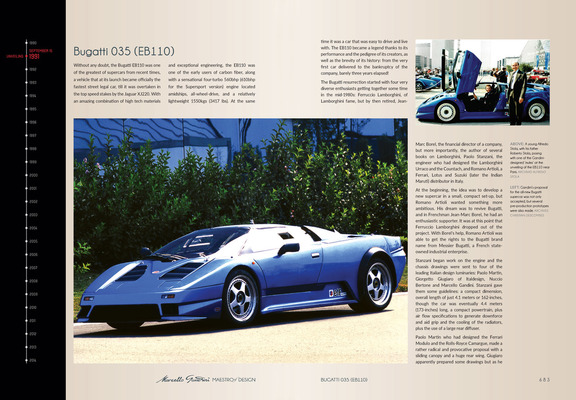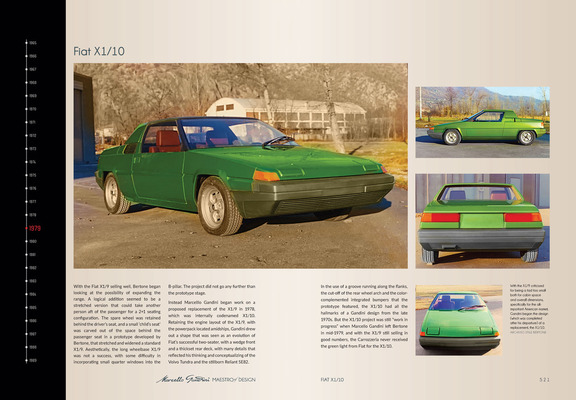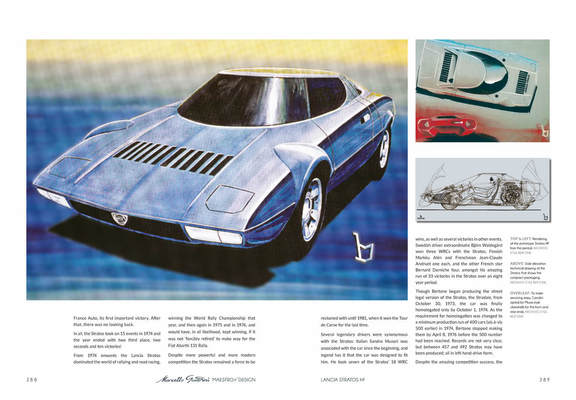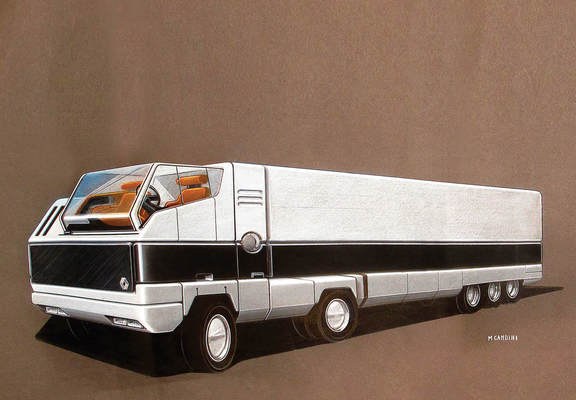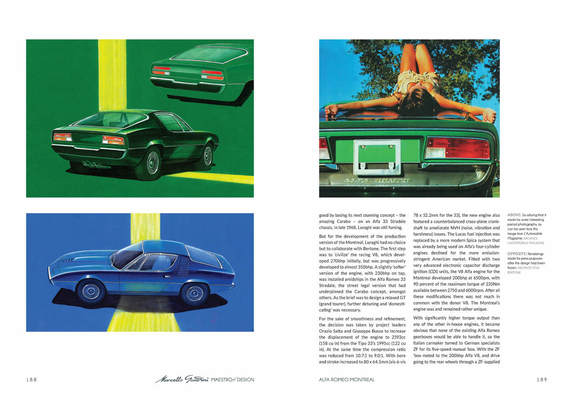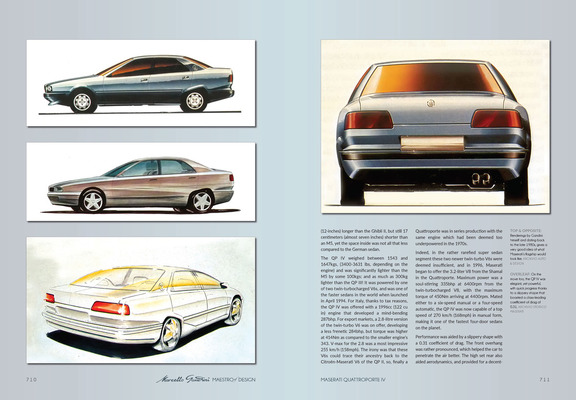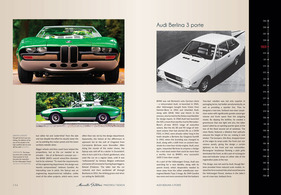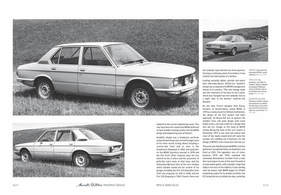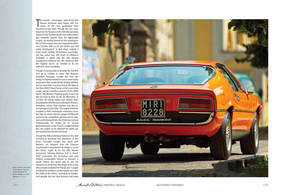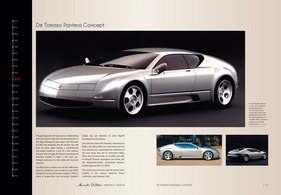Work of art
First things first. The two-volume, 800-page work "Marcello Gandini, Maestro of Design" is one of the best books on automotive design that we have ever read. It is not the sheer weight of the slipcase from which two thick volumes spill out, but the fact that this book exists at all.

After a quick book search, we know that there have indeed been several books published about Italian car designers. However, one about Marcello Gandini has not yet been published. The English-language work by author Gautam Sen closes this gap with a splendid overview of his work.
Marcello Gandini
Hardly anyone will deny that Marcello Gandini is one of the greatest automobile designers of the second half of the 20th century. His influence on automotive design in the last four decades of the 20th century, which extend far into the 21st century, is undisputed. With his bold and daring designs, Marcello Gandini has not only influenced automotive design, but also significantly transformed it. His creations are incomparable and one could almost say immeasurable. No one else has designed so many of the most epoch-making automobiles. And, most importantly, he put them on the road.

Italian automobile designers
When it came to automobile design after the Second World War, there was no getting around Italy. More precisely, Turin. This is where the great era of independent Italian car designers began in 1954, led by Bertone, who presented the Alfa Romeo Guilietta Sprint, a compact coupé with captivating lines, at the Turin Motor Show. From then on, manufacturers queued up in front of the Turin design Mecca. However, the Centro Stile Bertone owed its output to targeted and cultivated young talent. Countless designers have earned their spurs and left their mark in Bertone's history. Whether they began or continued their careers here.

This era, which lasted around 25 years, reached its peak in the years before the oil crisis. Bertone, Pininfarina, Giugiaro, Zagato, Vignale and Scaglietti - the creative pulse of automotive engineering was beating in the north of Italy. Nowhere else was such an elegant and spectacular form given to what was to be beautiful and fast with high-performance engines. Spectacular super sports cars from Lamborghini, Ferrari, De Tomaso and Lancia created the myth of the epitome of extravagantly clad flounders. In particular, the flat wedges cultivated at Bertone characterized this period, which also expressed a belief in the future that is still unforgotten today.
Gandini and Bertone
Around the middle of this era, Marcello Gandini took over as chief designer and successor to Giorgetto Giugiaro at Bertone in 1965. He made an enthusiastic start at Bertone with the Lamborghini Miura at its launch in Turin (1965) and at the Geneva Motor Show in March 1966. Having been rejected as an employee by Giorgetto Giugiaro two years earlier, Bertone created another icon under the signature of the new head of design as "in-house designer" for Lamborghini with the Miura successor Countach, which caused a sensation in addition to the Urraco, Jarama and Espada models. But even mundane mass-produced cars such as the Fiat 132 or the Fiat X 1/9 and the Mazda 1500 were given a body shape influenced by Gandini's style. Less well known are the advisory proposals of the time.

While French companies were already drawing on the art of automotive couture from Turin in the 1950s and 1960s, not so much was done in Germany. Only Volkswagen resorted to the help of Ghia until it was sold to Ford, and had the VW 411 largely dressed by Pininfarina before Giorgetto Giugiaro was to shape the new line of water-cooled Volkswagens of the 1970s. At the beginning of the 1960s, NSU and BMW sought design input from beyond the Alps. And when Auto Union had to do without help from Mercedes stylistics when it was sold to VW - after all, Paul Bracq had made some suggestions for the new F 102 - they did not rely solely on the handful of designers available in Ingolstadt for the transformation to Audi. Instead, contact was made with Turin and Bertone was asked to develop an alternative for moderate design modifications. And for the successor, the later Audi 80 and the Audi 50, Bertone was in the running with its own commissioned work for the bodywork concepts in the styling departments of Audi and VW.

As early as the beginning of the 1970s, the design departments in Germany began to be increasingly professionalized independently. This was a development that had already begun at Opel and Ford in the 1960s. In Germany, they once again relied on themselves. Luthe, Sacco, Schäfer and Warkuss shaped the Audi, BMW, Mercedes and VW brands until the 1990s.
A standard work
The processes in automotive design are always surrounded by an aura of mystery. No wonder, given that development takes place behind closed doors. By the time you get to see the pictures of prototypes, the design process is already complete. What you then see is less than was ever envisaged. This makes it all the more exciting when a book opens the closed doors and makes the design process of many well-known and some unknown vehicles public. The fact that this book focuses on just one designer makes it all the more attractive. The author Gautam Sen goes through Gandini's work year by year. He devotes himself to each model in the necessary detail. Certainly not an easy task, after more than 50 years in some cases and without the reassuring recourse to a well-organized archive. Gandini did not attach great importance to archiving his work. Instead, the author weaves Gandini's comments into the chronicle in intensive discussions with Gandini himself. A challenge, as Gandini is considered to be rather introverted, a man who is almost incapable of commenting on himself or his work. This makes it all the more astonishing how well this book manages to bridge the gap between the narrated story, the researched facts and the designer's impressions to create a lasting and impressive showcase of his work.
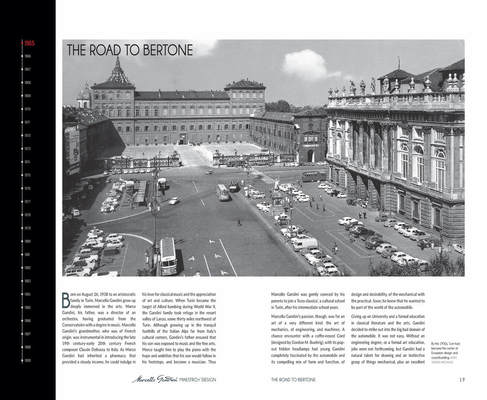
About the facts
We have deliberately refrained from listing the vehicles presented here. There are simply too many. Over 100 epochal models with over 900 pictures and sketches on over 800 pages in two volumes speak for themselves. It goes without saying that not every vehicle can be covered in the same depth. However, the book's appeal lies in its rich selection of images and its chronological presentation. It quickly becomes clear that Gandini also understood the recycling process of design. Certain stylistic elements such as the beading with the indentation above the toronado line, which continues into the C-pillar as in the Iso Rivolta Lele, were also presented in a proposal for the Audi 80. And the fact that the first BMW 5 Series is said to have a certain proximity to Alfa Romeo is not surprising when you compare the designs with the Alfetta from the late 1960s. The variety of design expressiveness is impressive. Whether super sports cars, sporty saloons, family cars or small, crisp sports coupés: Gandini created sculptures that had eye-pleasing bodies even in large-scale production.

Two books as if carved from solid wood
It is actually incredible that the designer of the Lamborghini Countach and the Lancia Stratos, who has created pioneering production cars from the Audi 50/VW Polo to the Citroën BX and countless concept cars, has so far been denied a book reference. But this is mainly due to Gandini himself. He is known for living a very reclusive life and only agreed to publish this book after his wife and daughter were able to persuade him to do so. The fact that the sparse information about Marcello Gandini has now been supplemented by two magnificent volumes only does justice to the designer. The reader is served up the whole thing in a simple form: two volumes in which Gandini's cars are presented one after the other in chronological order. There are also three sections on his years at Bertone, his time at Renault and the final stages of his career as an independent designer. Gandini himself has his say sparingly and is appropriately quoted throughout, starting of course with the Miura:
"It's a body with a lot of muscles, but they are the muscles of a beautiful woman, not those of a male body builder. It's mean, but with some soft features. It has a lot of edges, but all the curves are in the right place. The look is aggressive but alluring, the car is intimidating but attractive." Who could have said it better than the designer himself?

This magnificent book not only pays tribute to Gandini's work, it is a monument to him in book form. As a small thank you for all the many molds that Gandini has given us car-loving readers. Of course, so much effort has its price. You can order the book from Amazon for € 270. Not exactly a bargain. But measured against the page price of € 3,- it is absolutely justified. The slipcase, the very high print quality and the choice of images characterize a book that has been created with dedication to the cause. Anyone interested in automotive design in general and Italian automotive design in particular will not be disappointed here. On the contrary, they will be rewarded. But we made no secret of that in our opening statement.
Bibiography
- Title: Marcello Gandini - Maestro of Design
- Author: Gautam Sen
- Publisher: Dalton Watson Fine Books, 2017
- Format: 356 x 254 mm, 2 volumes, hardcover in slipcase, 800 pages, 924 illustrations
- Price: € 270,00
- ISBN: 978-1854432797
- Order at amazon.de or in a good bookstore



